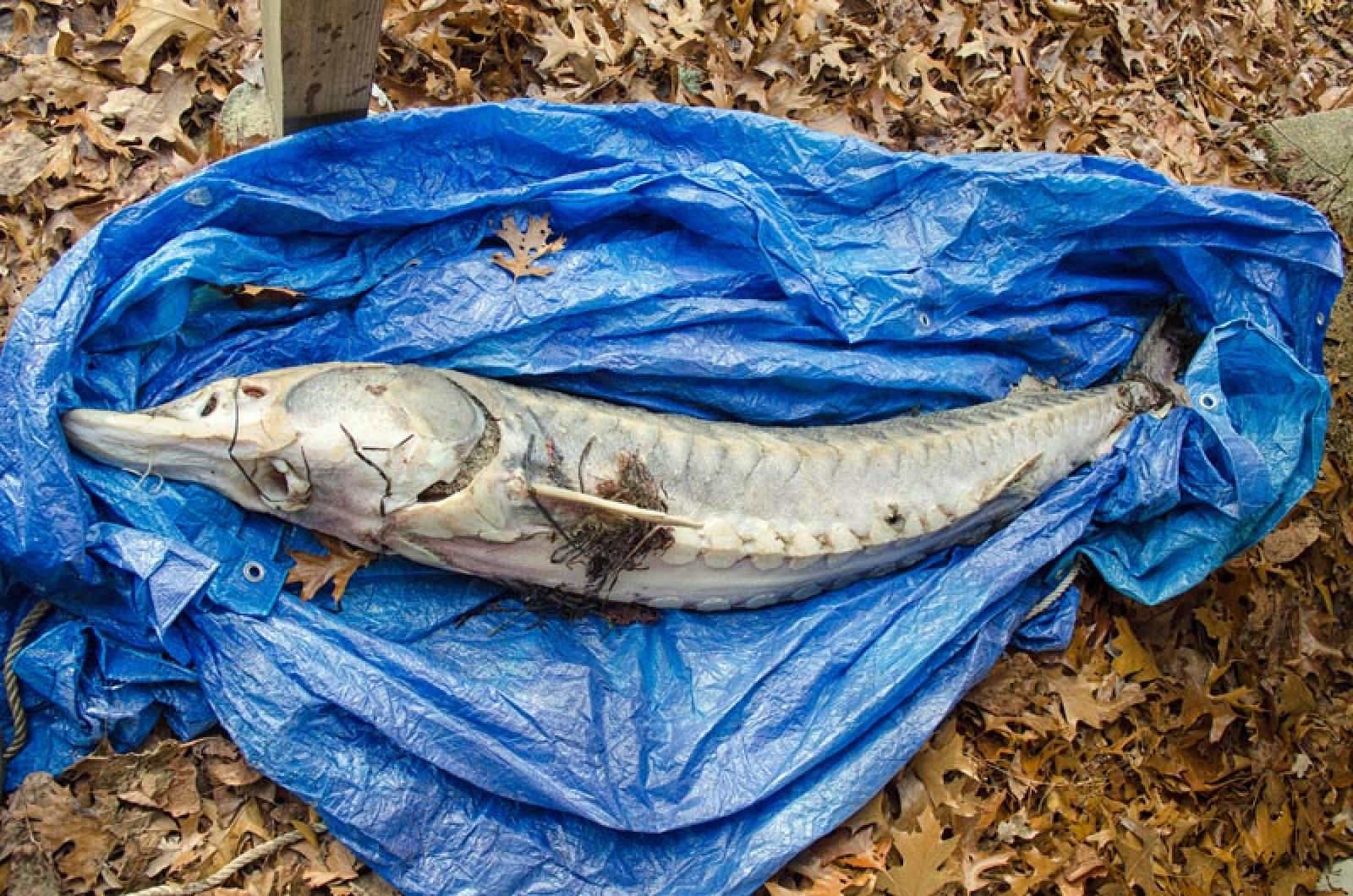It was, sadly, a fish out of water.
Last week, Lucy Thompson found a dead Atlantic sturgeon on a north shore beach. Her fish story is exceptional due to the rarity of the find. Atlantic sturgeon, once upon a time a common commercial fish, are now endangered.
Previously plentiful, sturgeons were noted for their meat, comparable to swordfish, and for their exquisite eggs, known as roe. This type of caviar was in high demand in Europe, and in certain affluent circles in this country. Its popularity was one reason for sturgeon’s dramatic decline in Atlantic waters, though other factors, including the damming of rivers and decline in water quality, have added to the species’ scarcity.
Harvests were high from colonial times until the early 1900s. Besides the meat and caviar, the fish was valued for oil. Even its air bladders were useful, providing a type of gelatin called isinglass. This substance was used for thickening jellies, and the bladders also yielded compounds used as a clarifying agent for beverages, for waterproofing, and as an adhesive and lubricant.
The sturgeon fishery declined dramatically due to overharvesting, and finally, in 1998, the fishery was closed. No harvest of Atlantic sturgeon is currently allowed, as the fish is endangered, protected by the National Oceanic and Atmospheric Administration (NOAA), and other national and state entities.
Local fisherman Kib Bramhall shares his remembrance of a great fish. “In the 1959s and 60s sturgeon were regularly seen (and sometimes hooked) off Wasque in the early summer. They seemed to hang out there for several weeks year after year, and then they simply vanished. They would breach like elevators rising from the deep and then falling back with tremendous splashes. An acquaintance of mine foul-hooked and landed an estimated 80 pounder from the beach at Wasque during that time.” Today, it is quite infrequent that any sturgeons are seen.
Lucy’s fish that didn’t get away would be interesting to the ichthyologist and neophyte alike. Sturgeons are among the oldest fish species known, having been around before the dinosaurs. They have a unique look with a sharp, upturned snout, sensory barbells, no teeth, and scutes, or bony plates, rather than scales on their body.
As toothless bottom-dwellers, feeding is accomplished through the use of those barbels and a vacuuming mouth that sucks up food from the bottom. Included in a sturgeon’s diet are clams, mollusks, worms and crustaceans.
Even if you were allowed put them in a pan, there aren’t too many bigger fish to fry. Sturgeons have been called the king of fishes due to their longevity and large size. These fish were known to reach 60 years old and can weigh more than 800 pounds.
Sturgeons live a dual life as anadromous fish. This lifestyle includes the need for both salt water and fresh water. Adult fish swim upstream into fresh water to spawn, but spend the rest of their lives in salt water. However, since it can take sturgeon more than a decade to reach maturity, it will be a long time before populations of these fish can recover. Massachusetts rivers, including the Merrimack, Taunton, North and Charles Rivers, have had sightings of sturgeon in historic memory.
So it is a heartfelt wish that Lucy’s sturgeon was not the only fish in the sea, and that the populations of this once plentiful species may someday rise up — breaching the forces that keep its population suppressed — and regain its former glory as emperor of the ocean.
Suzan Bellincampi is director of the Felix Neck Wildlife Sanctuary in Edgartown, and author of Martha’s Vineyard: A Field Guide to Island Nature.







Comments
Comment policy »